Beth "O" Stern
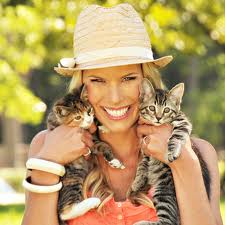 Yes, she is the wife of Howard Stern. But more importantly, Beth Ostrosky-Stern is an avid animal advocate, and she's fostering a bunch of animals at home. She says Howard is really into her pets and sometimes he'll get very emotional when the animals find homes.
Yes, she is the wife of Howard Stern. But more importantly, Beth Ostrosky-Stern is an avid animal advocate, and she's fostering a bunch of animals at home. She says Howard is really into her pets and sometimes he'll get very emotional when the animals find homes.
Currently, Stern is fostering a momma cat and her litter of four kittens, as well as three other kittens. This all happens at her house and keeps her busy! Unfortunately it is kitten season (when is it not?) in these summer months and every shelter is overpopulated with cats.
Beth recently decided to go into a municipal shelter and grabbed a litter of kittens. Both Beth and Howard fostered the litter. Howard even mentioned it on his radio show. As a result, they received over 100 applications from wonderful people who wanted to adopt the kittens. Beth, along with the North Shore Animal League, screened potential adopters and found six kittens wonderful homes. Beth then decided to grab another litter, as well as the current litter she is fostering.
Somehow we can't picture Howard Stern with kittens, but Beth assures us that he is right there with her. He even photographs and names them and even cried when the first litter went to their new homes. Beth states that Howard falls in love with these kittens as quickly as she does.
Beth was the host of the show, "Spoiled Rotten Pets" on Nat Geo, and when asked what she does to spoil her pets, she tells us that Leon Bear, her 22-pound cat, sleeps in the bed with Howard and her and takes up more space than she does. Beth tells us that there are so many nights when she has the worst sleep because Leon Bear is comfortable and she is left sleeping on the edge of the bed. Beth says she always puts her pets' comfort first and always has about three cats in bed with her and Howard every night.
When she was growing up, her family always had rescued animals. These included everything fro Guinea Pigs to chickens. They always had two cats and a dog in the household as well.
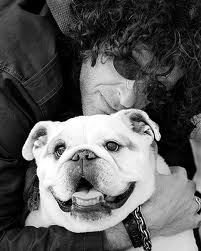 Beth and Howard currently have four rescued cats from the North Shore Animal League that she has accumulated over the last five years. She always rescues adult cats, which fill her house with so much love! They usually have a dog in their house too, but are currently mourning the one-year-anniversary of the passing of their beloved Bulldog, Bianca. When asked if she is a cat or dog person, Beth states that she is, "An equal opportunitist," when it comes to the animals.
Beth and Howard currently have four rescued cats from the North Shore Animal League that she has accumulated over the last five years. She always rescues adult cats, which fill her house with so much love! They usually have a dog in their house too, but are currently mourning the one-year-anniversary of the passing of their beloved Bulldog, Bianca. When asked if she is a cat or dog person, Beth states that she is, "An equal opportunitist," when it comes to the animals.
Beth is a volunteer for the North Shore Animal League and has been their spokesperson for the last 10 years. They are the largest no-kill adoption organization in the world. Beth's mission is to spread the word to adopt from your local shelter. Do not buy from pet stores, which facilitate a horrible cycle of puppy mills. She states that, "When you adopt from a shelter, you are saving two lives, the one you are adopting and you are opening up space for someone else to come in."
Beth and Howard Stern were married at Le Cirque restaurant in New York City on October 3, 2008. Stern received her first noticeable move role as one of the daughters of Ben Stiller's supposed birth parents in the 1996 film, Flirting with Disaster. Stern played a more prominent role four years later, in the film Whipped, with Amanda Peet. Ostrosky has also appeared on television, appearing in the final season of G4 show Filter and the Spike TV series Casino Cinema.
http://www.animalleague.org
Pet Restraints FAIL
Linda Wolko, Center for Pet Safety
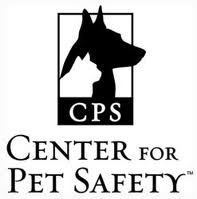 A new study from the Center for Pet Safety reveals that the pet restraints tested have a 100-percent failure rate. Does this mean you shouldn't use them when traveling with your pet? Absolutely not! However, Lindsey Wolko has the lowdown on what works and what doesn't when it comes to keeping your pets safe in the car.
A new study from the Center for Pet Safety reveals that the pet restraints tested have a 100-percent failure rate. Does this mean you shouldn't use them when traveling with your pet? Absolutely not! However, Lindsey Wolko has the lowdown on what works and what doesn't when it comes to keeping your pets safe in the car.
The focus of this pilot study was to determine the general effectiveness of canine automotive restraints. Do they prevent injury of the pet? Do they prevent secondary injury to humans in an automobile accident?
Because standardized testing does not exist for this class of pet product, they used a test generally referenced by some canine safety harness manufacturers for child restraint systems.
The testing was conducted at MGA Research Corporation's test facility located in Manassas, Virginia. The pilot study was completed using a specially designed crash test dog model weighing 55 pounds at a speed of 30 miles per hour. They do not use live animals in their testing. For the purpose of this initial study, they tested products intended for large dogs, generally 50-85 pounds. (Sample breeds in this size include Poodles, German Shepherds, Irish Setters, Labrador Retrievers, Boxers, and Weimaraners.)
They tested multiple brands and sizes of selected harness products that claimed they have been tested for crash testing and crash protection.
Other add-on products to vehicles such as booster seats, zip-lines and extension tethers don't have to go through testing, so many manufacturers do not test these products at all.
Alarmingly, the pilot study revealed a 100-percent failure rate. None of the harnesses were deemed safe enough to protect both the dog and the humans in the event of an accident.
 The slow-motion videos provide evidence of what happens to a large, harnessed dog in a simulated collision of a car traveling 30 miles per hour. Examples of problems include:
The slow-motion videos provide evidence of what happens to a large, harnessed dog in a simulated collision of a car traveling 30 miles per hour. Examples of problems include:
- Extremely low likelihood of survivability for the animal.
- Danger to humans when the dog becomes a missile.
- Choking and/or other bodily harm to the animal when harness materials cinch tightly upon impact.
- Extensive damage to fixtures within the vehicle caused by the projectile animal.
Pet product safety is a concern shared by consumers and manufacturers, and they understand why people want to know the brand names tested in the pilot study conducted by CPS. However, they are not yet in a position to reveal the names of individual products or brand names, and here's why:
Their primary concern is NOT to attack individual manufacturers for selling well-intentioned products. If they share brands at this early stage in their work, they shift the focus away from what is truly needed: measurable, safe standards that manufacturers can follow for the benefit of consumers.
After these standards are in place, they can then work with manufacturers to guide them as they develop safe, tested products.
In other words, manufacturers are not ignoring safety standards. There simply are no existing standards in place. This is not the fault of the manufacturer. Pet product safety is an emerging issue, and the Center for Pet Safety was formed to address it. The good news is that we are seeing better protection, but you need to be very discerning on how you shop for these products.
What's Next?
- Over the next few weeks, the Center for Pet Safety is compiling and analyzing the large volumes of data.
- The collected data will support the first Pet Travel Product Standard to be completed in the fall.
- The Center for Pet Safety, along with our Harness Study partner, Subaru of America, will announce the top performing harness brands in early October.
- Additional scientific research is planned for other types of pet containment devices, including crates, carriers and barriers, as well as animal flotation devices.
- An education component will be added to further the consumer advocacy mission.
- An independent pet product certification is being planned for 2014.
http://centerforpetsafety.org
Devices That Allow Us To Talk To Our Pets
Con Slobodchikoff, Animal Behaviorist
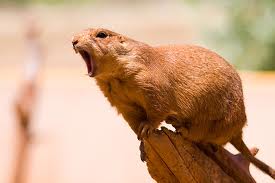 Con Slobodchikoff, Animal Behaviorist and Professor Emeritus, Biology Department, Northern Arizona University, is studying animal linguistics. He's noticing patterns that indicate language among cats and even prairie dogs. He even says that some day we may have an App that will translate our conversations with animals.
Con Slobodchikoff, Animal Behaviorist and Professor Emeritus, Biology Department, Northern Arizona University, is studying animal linguistics. He's noticing patterns that indicate language among cats and even prairie dogs. He even says that some day we may have an App that will translate our conversations with animals.
Slobodchikoff is currently decoding animal language and trying to understand what they talk about. He is also writing about it in his new book, Chasing Doctor Dolittle.
He has specialized in working with prairie dogs and has found out that they have alarm calls that have words for different predators. They have a word for coyote, another word for dog, hawk and even a word for a human. Within those words, they can describe the size and shape of the individual predator. For example, they can describe the color and size of a dog and the color of clothing on humans. It is a very sophisticated language.
When asked about cat language, Slobodchikoff states that we don't know much about cat vocalization. We do know, however, that cats have about 5 different kinds of vocalization. Some of these seem to be universal; such as the clicking sounds when a cat sees a bird and when it sees an insect it makes a slightly different clicking sound. But, we unfortunately don't really know that much about cat language, and have only recently started exploring the language of cats.
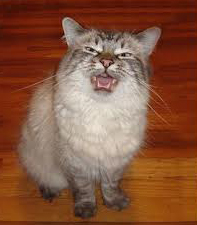 Not too long ago we thought that cats were solitary animals who were quite happy to be off by themselves. But when people started looking at semi-feral cats, they found that cats were very social animals who liked to socialize with other cats that they were related to. We are just now starting to find out more about both the social structure and the vocalization of cats. However, we still have a ways to go.
Not too long ago we thought that cats were solitary animals who were quite happy to be off by themselves. But when people started looking at semi-feral cats, they found that cats were very social animals who liked to socialize with other cats that they were related to. We are just now starting to find out more about both the social structure and the vocalization of cats. However, we still have a ways to go.
Slobodchikoff understands the prairie dogs' language with the use of technology. The prairie dog's calls are recorded and then put into a computer. They then measure various aspects of the calls. They are now working on a way to duplicate their language so as to speak back to them. This means they will speak English into the computer and have a program synthesize the proper prairie dog language and then play it back to the prairie dogs. Slobodchikoff states that they have the potential to do this back and forth speaking with these animals.
Slobodchikoff acknowledges that one of the biggest problems between humans and their companion animals is a lack of ability to understand each other. He believes that in using this technology, in five to ten years they will be able to develop perhaps apps on a cellphone which would allows us to talk to our cats and dogs, and maybe even farm animals on a basic level.
http://www.chasingdoctordolittle.com
The Dogfather's Grooming Tip with Joey Villani
 Brushing and Combing Your Pet
Brushing and Combing Your Pet
People have a misconception that they don't need to brush or comb a pet who has been shaved down. This is the biggest fallacy when it comes to grooming and will cause many problems.
All pets need to be brushed, even those that are shaved down as well as those called non-shedding pets. These so-called non-shedding pets actually do shed. They may not shed at the degree of other pets, such as a Bichon who will not shed as much as a German Shepherd, but the Bichon will shed. People think they can get away without the maintenance of brushing and combing if they shave their dog down.
 Unfortunately, groomers don't take the proper amount of time when shaving down a dog to remove the undercoat. So what happens is that the undercoat wants to come out, which it does after it is shaved, as shorter hair, and it gets caught in you comforter, pillows carpets and rugs. This shorter hair is a lot harder to get out of your house.
Unfortunately, groomers don't take the proper amount of time when shaving down a dog to remove the undercoat. So what happens is that the undercoat wants to come out, which it does after it is shaved, as shorter hair, and it gets caught in you comforter, pillows carpets and rugs. This shorter hair is a lot harder to get out of your house.
If a dog is left with long hair, as they move about either indoor or outdoor, the dead undercoat is being pulled out as they rub against things. Unfortunately you will still find this hair in your house, but this process builds healthy, nice, new coat. This will leave the coat better looking, with better texture and will also keep your pet smelling better. This natural process also stimulates the skin, so everything works better.
So make sure you brush and comb your pet on a regular basis. Not only will this be better for your pet's well being (and your home!) it is also a great way to socialize the pet who is a little shy.
Animal Radio® News with Stacey Cohen
 New Dinosaur Found In Utah
New Dinosaur Found In Utah
Scientists in Utah are revealing details about a new dinosaur species recently discovered. Dr. Alan Titus says the animal's unique features show how diverse dinosaurs were in the southern U.S. Titus has been key in researching this new species. It was found on the Grand Staircase-Escalante National Monument in the southern part of Utah seven years ago. Paleontologists talked about the new dinosaur find at the Natural History Museum in Salt Lake City. The species was part of the triceratops family and it had one horn over its nose and the other horn over its eyes.
 Woolen Coffins
Woolen Coffins
A funeral director in Scotland has found a way to help people stay environmentally friendly in the afterlife. According to The Scotsman, John Fraser and Sons are offering their customers the option of using a woolen coffin rather than the standard model made out of wood. They explain that the softer caskets are made from 100-percent British wool and are supported by a strong recycled cardboard frame and cotton lining. They also come with a personalized nameplate and a biodegradable waterproof base. Vicki Fraser, who runs the business with her father, says the demand for the alternative is growing. She adds that many people are impressed with how "comforting" the woolen coffins feel.
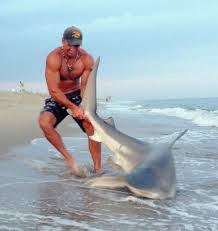 Fisherman Catches Shark With Bare Hands
Fisherman Catches Shark With Bare Hands
Recreational fisherman Elliot Sudal doesn't like competing with sharks. On night, he pulled a 200-pound sandbar shark from the water with his bare hands in Nantucket, Massachusetts. The shark was reportedly eating the bluefish Sudal wanted to catch. Sudal tells the New York Daily News he caught the shark on his fishing line and when it had tired out, he ran into the water and snatched it up by the tail. Sudal released the shark so it could go back to hunting. Sudal also told the paper he's pulled dozens of sharks from their watery home because, quote "there's something satisfying about catching something bigger than you."
 Sunbathing Alligator Finally Caught
Sunbathing Alligator Finally Caught
An alligator that's been roaming around ditches in Gulfport, Mississippi has finally been caught. Police say the gator was caught while sunbathing near a UPS building. Officers used a catch pole, typically reserved for dogs, to nab the animal. The three-and-a-half-foot gator will be relocated to a safer place and away from neighborhoods.
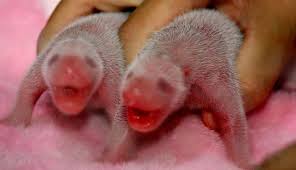 First Giant Panda Twins Born in U.S. Since 1987
First Giant Panda Twins Born in U.S. Since 1987
A giant panda is the happy mom of twins. Dr. Dwight Lawson with Zoo Atlanta says Lun Lun, a 15-year-old panda on loan from China, gave birth to the twins at the zoo. The zoo says the tiny babies are the first giant panda twins to be born in the U.S. since 1987. Lun Lun was reported to be in labor for barely 90 minutes. That compares with 36 hours for her first delivery in 2006.
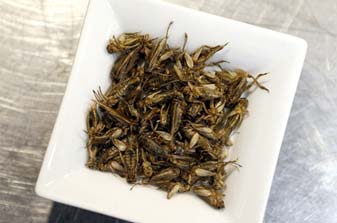 Bugs Intentionally Added To Your Food
Bugs Intentionally Added To Your Food
Acclaimed European chef David Faure isn't worried about his diners finding a bug in their meals. In fact, he's started intentionally adding a variety of creepy crawlies to the dishes he serves at his restaurant in Nice, France. Among the new specialties are a dessert with crickets, which Faure likes for their "popcorn" flavor and a cod dish with mealworms, which he claims add nice nutty tones to the fish. According to Orange News, Faure got the idea for his "alternative foods" menu while traveling to countries where citizens use insects in their everyday diets. He says the biggest obstacle in his quest to make his own cooking more adventurous was finding a reliable local supplier of edible insects. He's since solved that problem with the help of nearby company that raises their insects on organic vegetables and meal.
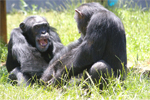 Apes Don't Forget!
Apes Don't Forget!
Scientists have discovered that just like humans, chimpanzees and orangutans can apparently remember things that happened years ago in their lives. The ability to remember events from the remote past "has been considered a defining feature of human nature," said comparative psychologist Gema Martin-Ordas, of Denmark. Now she and her colleagues find that chimpanzees and orangutans can also recall distant memories. In experiments with 15 chimpanzees and four orangutans, the scientists tested whether the animals could remember events they experienced years ago. Three years prior, the apes had watched the researchers hide tools that the chimpanzees and orangutans needed to grab rewards that were otherwise out of their reach. As the apes looked on, the researchers repeatedly hid the tools a total of four times. In the new experiment, the scientists had the apes carry out the same tasks, in the same rooms, with the same experimenters. With just one exception, all the apes tested recalled where the necessary tool was hidden to reach its reward. "I was surprised to find out not only that they remembered the event that took place three years ago, but also that they did it so fast," Martin-Ordas said. "This is the first study showing that chimpanzees and orangutans remember personal past events that took place a long time ago, when presented with the appropriate cues."

NEWS UPDATE brought to you by Drs. Foster & Smith, affordable pet supplies. Low prices every day, so you save on every order.
 Listen to the entire Podcast of this show (#713)
Listen to the entire Podcast of this show (#713)







